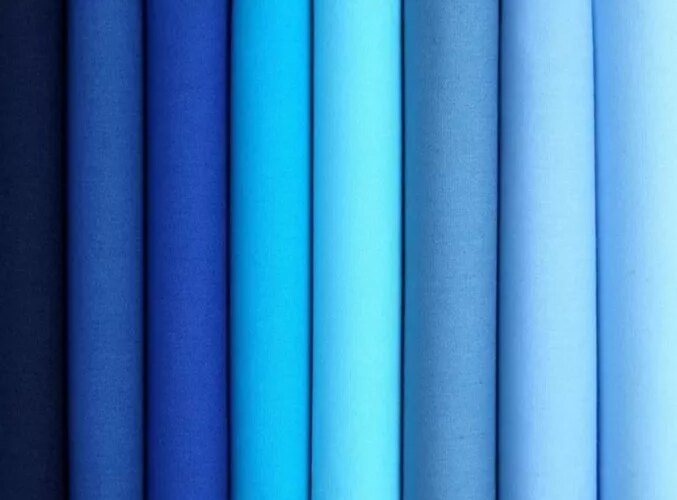Are you in search of suitable uniform fabrics for your school, company, or team? Learn about the most popular fabrics used today.
1. Cold elastic fabric
Cold spandex fabric is a type of fabric made from PE (polyethylene) material that offers several advantages. It has a smooth and flat surface, making it easy to print or embroider logos, information, or images of businesses and teams. One of the standout features of this fabric is its cooling sensation, which adds to its comfort when worn. The material is also soft, smooth, thin, and lightweight, making it pleasant to wear. Additionally, this fabric is cost-effective, making it an attractive option for various applications. It is commonly used for sewing uniforms in outdoor events, sports events, or team-building activities.
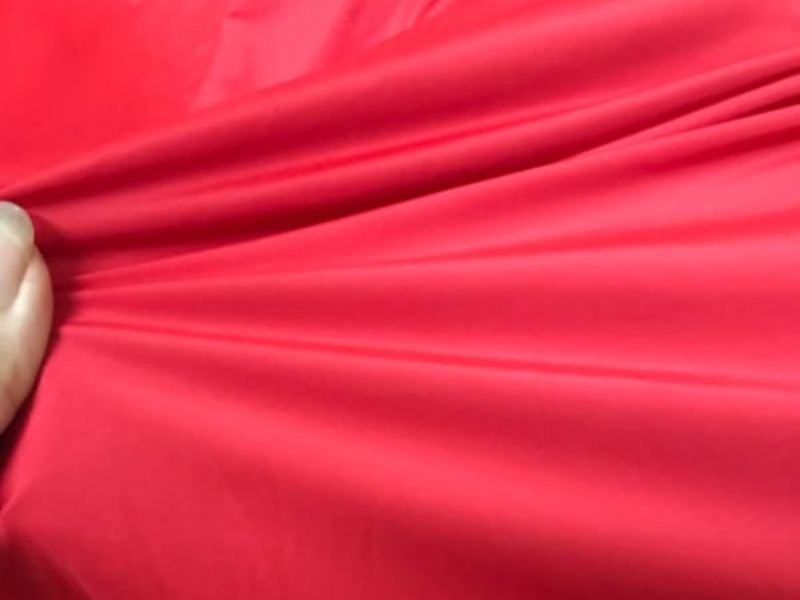
Cold spandex fabric has gained significant popularity as a uniform material in recent times. This fabric, known for its unique blend of comfort and functionality, is widely embraced by various industries and organizations for their uniforms. The fabric’s ability to provide a cool and refreshing feel makes it particularly desirable in environments where temperature regulation is crucial. With its increasing demand and versatile nature, cold spandex fabric has become a preferred choice for many uniform manufacturers and wearers alike.
2. Cotton fabric
Cotton fabric typically consists of approximately 90-95% natural cotton fiber, with the remaining 5-10% comprising spandex, polyester, or linen fabric. It comes in various types, depending on the ratio of its components, such as 3-way stretch cotton fabric or 4-way stretch cotton fabric. Cotton fabric offers several advantages, including its cooling effect, absorbency, softness, skin-friendliness, and elasticity. As a result, it is commonly used for sewing office uniforms, staff uniforms, and school uniforms.
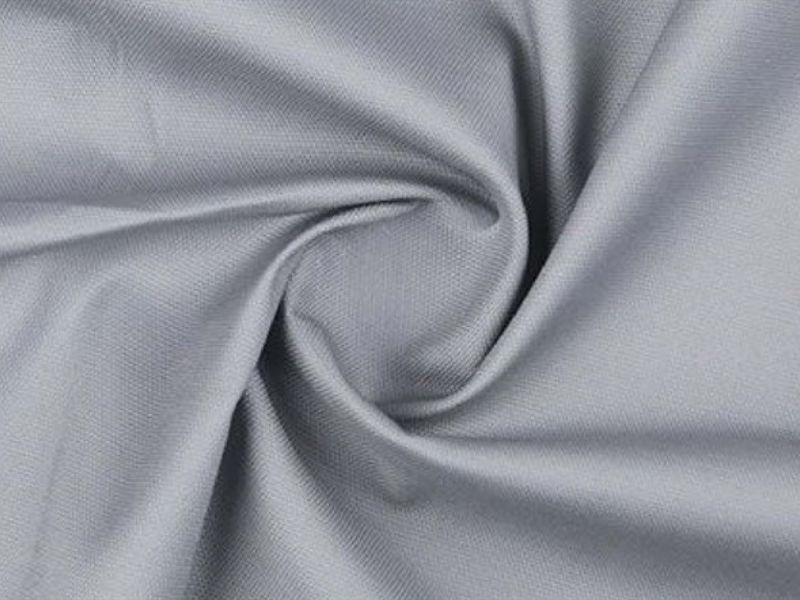
Cotton fabric is known for its ability to provide a cool and comfortable feeling due to its breathable nature. Additionally, it offers good elasticity, allowing for flexibility and ease of movement.
3. Crocodile leather fabric
Crocodile leather fabric, also referred to as Lacoste fabric, is composed of 60-62% cotton and 35% PE or Spandex. This fabric is widely used in the production of uniforms due to its numerous advantages. It is highly durable, resistant to pilling, and maintains its color well over time. Additionally, crocodile leather fabric has a stiff texture that helps it maintain a proper form. It is commonly selected for sewing collared uniforms or for situations that require an element of luxury and elegance.
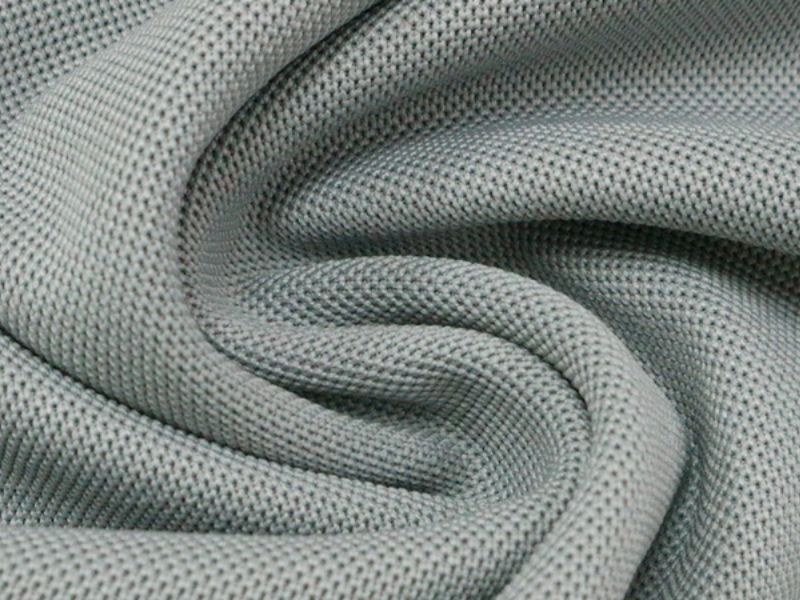
Crocodile leather fabric is frequently employed in the creation of collared uniforms that have a similar form to polo shirts. This type of fabric provides a luxurious and distinctive texture to the garments, and adds an element of sophistication and uniqueness to the overall design. The use of crocodile leather gives the uniforms a high-end appearance and sets them apart from traditional fabric options.
Crocodile leather fabric is available in two types: 2-way stretch and 4-way stretch. However, the 4-way stretch variant holds higher value due to its superior sweat absorption and durability. Consequently, 4-way stretch crocodile leather fabric is priced higher compared to the 2-way stretch alternative.
4. Polyester Fabric
Polyester fabric, also referred to as PE fabric, possesses excellent elasticity and boasts a sleek surface, making it suitable for printing images, logos, as well as company and business designs. However, the drawback of PE fabric lies in its inadequate moisture absorption capability. Consequently, this type of fabric is exclusively utilized for creating disposable uniforms and promotional items.
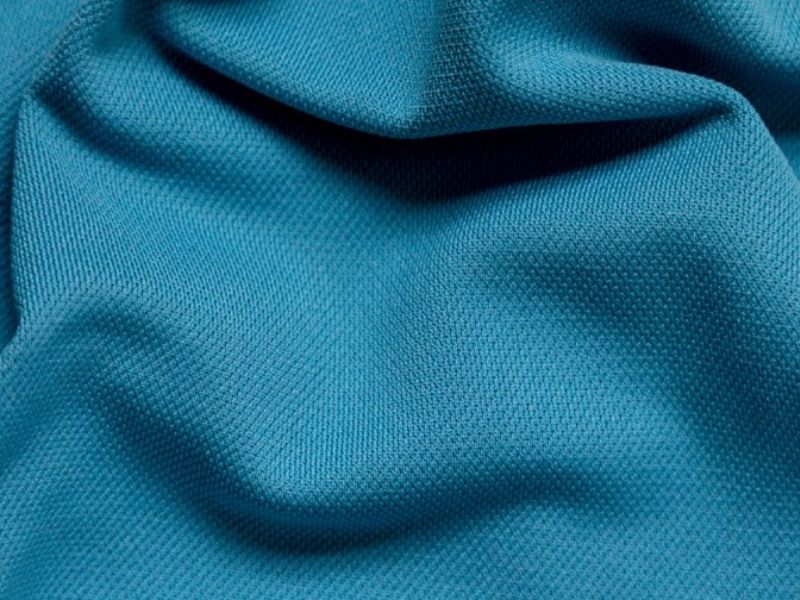
The PE fabric that is available at a low cost has poor absorbency properties.
5. Cotton bee CVC fabric
Bee cotton CVC fabric is a blend of cotton, polyester, and special synthetic fibers, making it a highly sought-after fabric for uniforms. It is known for its exceptional qualities, including comfort, breathability, flexibility, color retention, and affordability. Moreover, Bee cotton CVC fabric comes in a wide range of vibrant colors, allowing businesses to select options that align with their company image. Due to its desirable properties, this fabric is frequently ordered in bulk to create uniforms for large groups of employees.
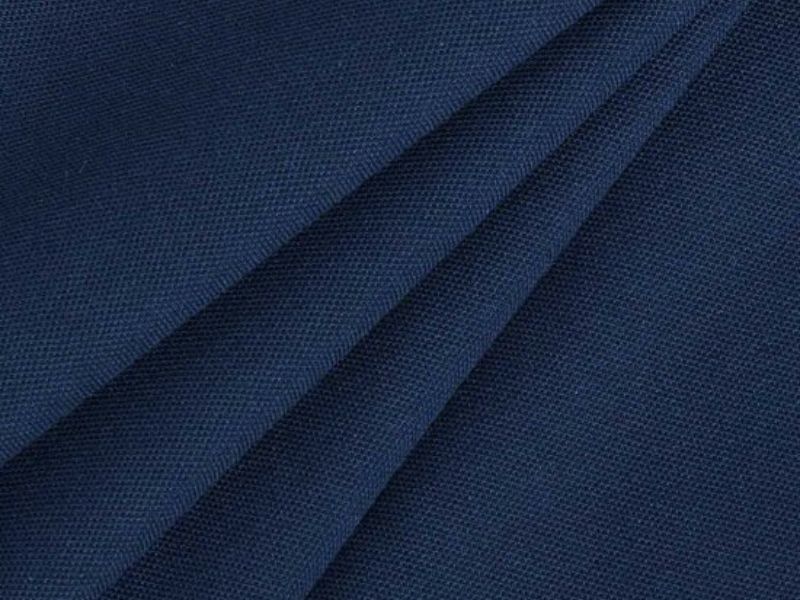
We offer a diverse range of CVC fabric in various colors, all at affordable prices.
6. Rayon fabric
Rayon fabric is an excellent option for uniforms, particularly in hot environments. This fabric offers numerous benefits such as its softness, breathability, and smooth surface, which all contribute to a comfortable wearing experience, especially in hot climates. Additionally, Rayon fabric has the remarkable ability to effectively absorb sweat, ensuring that the wearer remains dry and comfortable throughout the day.
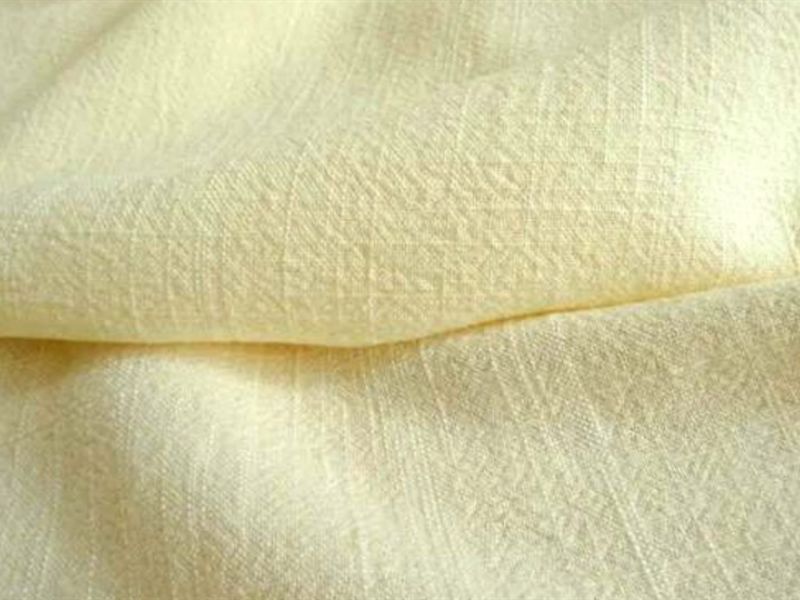
Rayon fabric is known for being a lightweight and breathable material, providing a cool and comfortable experience for the wearer. However, one drawback of rayon fabric is its tendency to wrinkle easily.
In addition, this fabric is crafted from regenerated cellulose fiber, resulting in a luxurious silk-like appearance and texture that is incredibly soft like velvet. However, one drawback of this fabric is its tendency to wrinkle more easily compared to other fabrics. Therefore, regular ironing is required to maintain its shape and ensure a crisp, wrinkle-free appearance.
7. Modal fabric
Modal fabric is a type of fabric that is derived from recycled cellulose, specifically from beech trees. It is widely popular as a choice for uniforms due to its numerous exceptional benefits.
- Soft and smooth, comfortable and safe to touch.
- High moisture absorption, 50% better sweat absorption than cotton, helps keep the body dry and cool, especially suitable for hot summer days.
- Natural antibacterial helps inhibit bacteria and mold, providing skin safety and preventing body odor.
- High durability, less shrinkage or pilling after many washes. Good elasticity helps Modal hug the body, creating a comfortable feeling when moving.
- Environmentally friendly and considered to be less chemical and energy intensive than other fabrics, contributing to environmental protection.
Nevertheless, uniforms manufactured from Modal fabric tend to be considerably pricier compared to uniforms made from other fabrics.
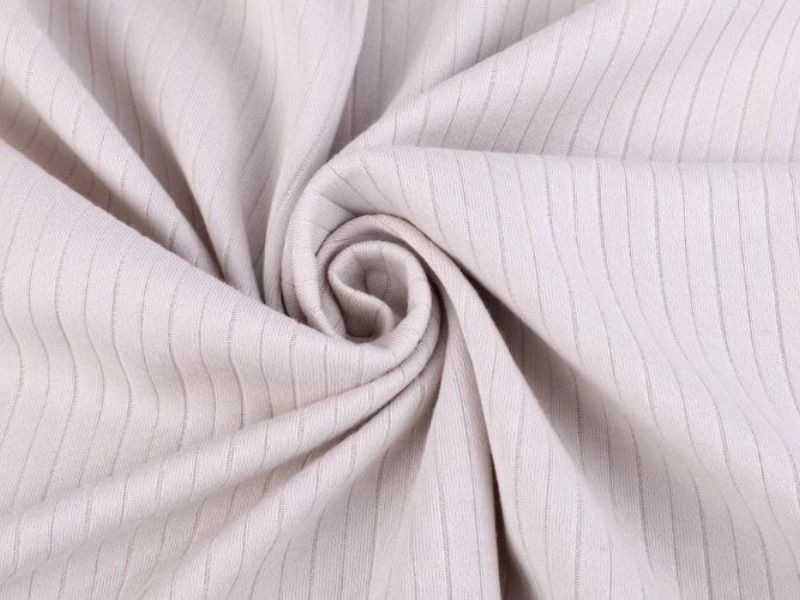
Modal fabric is known for its antibacterial properties, making it a suitable choice for garments that come into direct contact with the skin. Additionally, it is considered safe for the skin, providing a comfortable and irritation-free wearing experience.
8. 4-way Thai Poly fabric
Thai Poly fabric is a type of fabric that is composed of 95% Poly fiber, 3% – 5% spandex fiber, and also contains some additives called nano fibers. These nano fibers are added to enhance the fabric’s cooling and comfortable properties. Thai Poly fabric is particularly suitable for making uniforms during the summer season due to its numerous advantages. It is known for being cool, breathable, resistant to pilling, and not easily wrinkled, eliminating the need for frequent ironing.
One of the most remarkable features of the 4-way Thai Poly fabric is its exceptional elasticity, which is achieved through the blend of spandex fibers. This elasticity provides the wearer with a comfortable feeling and allows for ease of movement. Moreover, this fabric is also less prone to wrinkling, ensuring that the outfit maintains its attractive shape.
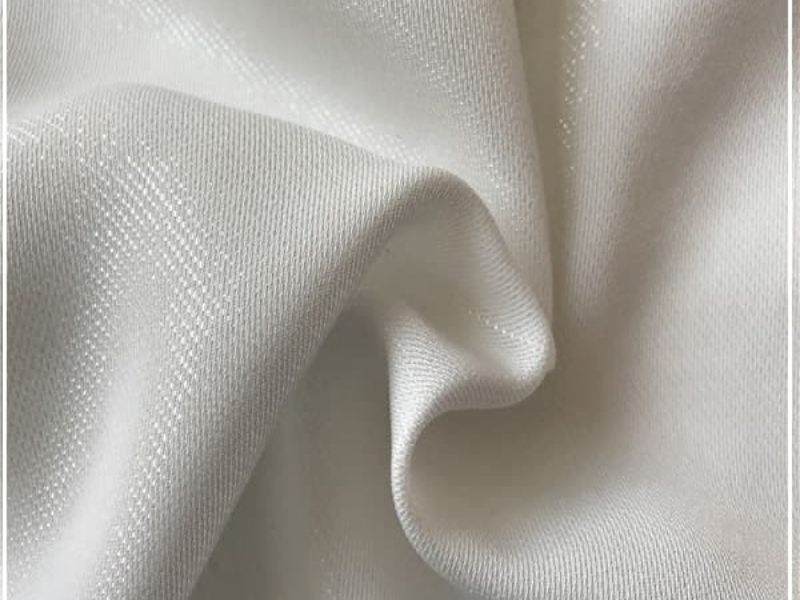
The Thai Poly 4-way stretch fabric is known for its exceptional qualities. Not only is it cool and airy, but it also offers an impressive 4-way stretch. These features make it a highly desirable fabric choice for those seeking comfort, flexibility, and breathability. Whether it’s for athletic wear, casual clothing, or any other application, this fabric provides a combination of comfort and functionality that is hard to beat.
9. Kate Silk fabric
Kate Silk fabric, also referred to as Kate velvet or Kate silk, is a versatile synthetic fabric that combines natural Cotton fiber with artificial Polyester fiber in varying proportions. It is widely used in clothing, particularly for the production of school and office uniforms. The fabric’s main appeal lies in its softness and coolness, offering a comfortable sensation when worn. This makes it particularly suitable for hot and humid climates like Vietnam. With its unique blend of natural and synthetic fibers, Kate Silk fabric has gained popularity for its ability to provide both style and comfort in clothing.
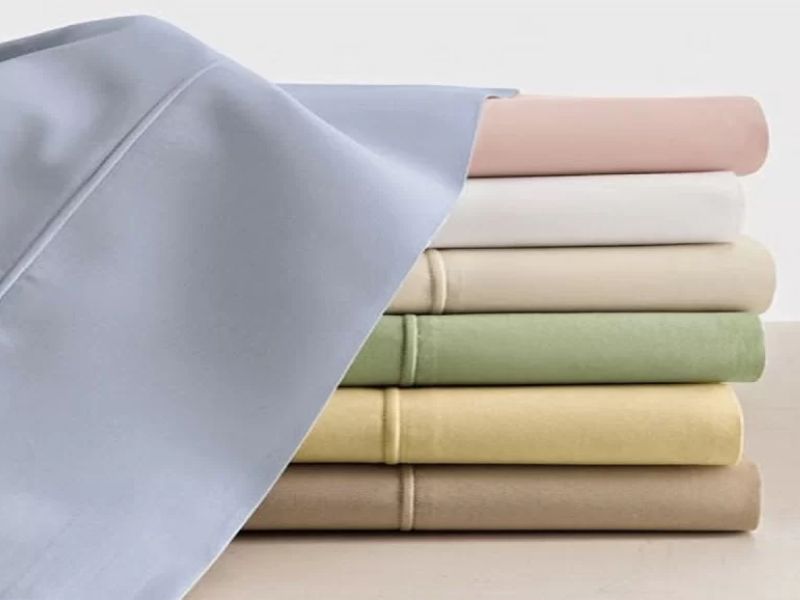
Soft Kate Silk fabric is a versatile material that can be comfortably worn throughout the year. It is suitable for all seasons and provides a luxurious feel against the skin. Whether it’s a warm summer day or a chilly winter evening, this fabric will keep you comfortable and stylish.
Kate velvet fabric is highly sought after due to its exceptional durability and resistance to wrinkles, making it a convenient option for those who want to save time on ironing. Additionally, clothing made from kate silk fabric is known to effectively absorb sweat, ensuring that the wearer remains dry, light, and comfortable.
Kate silk fabric is classified into various categories based on the specific mixing ratio between its components. These classifications are established to differentiate the fabric based on its composition.
- Kate Silk 65/35: 65% Cotton and 35% Polyester ratio, providing softness, coolness and good absorbency.
- Kate Silk 35/65: Ratio of 35% Cotton and 65% Polyester, high durability, less wrinkles and cheaper price.
- Kate Silk 100% Polyester: Most durable, least wrinkled but less sweat absorbent.
10. Kate bamboo fabric
Kate bamboo fabric, also known as bamboo fabric, is a fabric that is composed of a blend of natural bamboo fibers (approximately 50%) and synthetic fibers (usually Polyester or Microfiber, also around 50%). This particular fabric is becoming increasingly popular for clothing, particularly for making school and office uniforms. It is commonly used for making a variety of garments such as men’s T-shirts, trousers, skirts, and shirts.
Kate Bamboo fabric has gained significant popularity in the clothing industry due to its soft, light, and comfortable texture, particularly ideal for use in hot climates. Moreover, the fabric’s natural bamboo fiber has inherent antibacterial and deodorizing properties, effectively inhibiting the growth of bacteria and mold. This makes it a safe and hygienic choice for garments in direct contact with the skin.
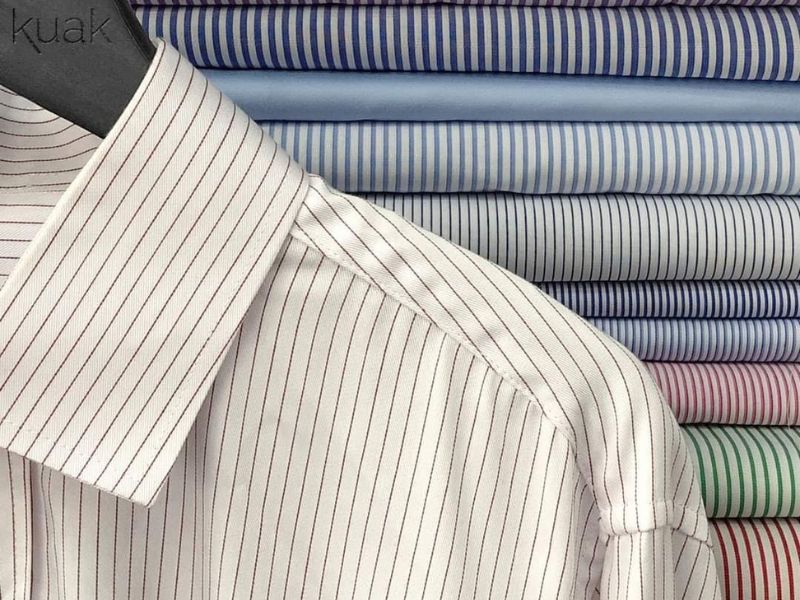
Kate’s bamboo fabric is known for its cooling properties and its ability to inhibit bacterial growth.
Due to its exceptional qualities in terms of both quality and environmental sustainability, kate bamboo fabric is gaining significant popularity among businesses and schools as a preferred choice for designing uniforms for employees and students.
11. Khaki fabric 65/35
65/35 khaki fabric is a synthetic blend consisting of 65% Polyester and 35% Cotton. This fabric ratio is commonly used in the manufacturing of clothing, particularly for sewing uniforms, workwear, technical shirts, mechanical shirts, construction shirts, aprons, caps, and more. It falls under the mid-range price segment and offers numerous advantages such as excellent durability, maintaining a sturdy shape, limited wrinkling, and ease of washing and ironing.
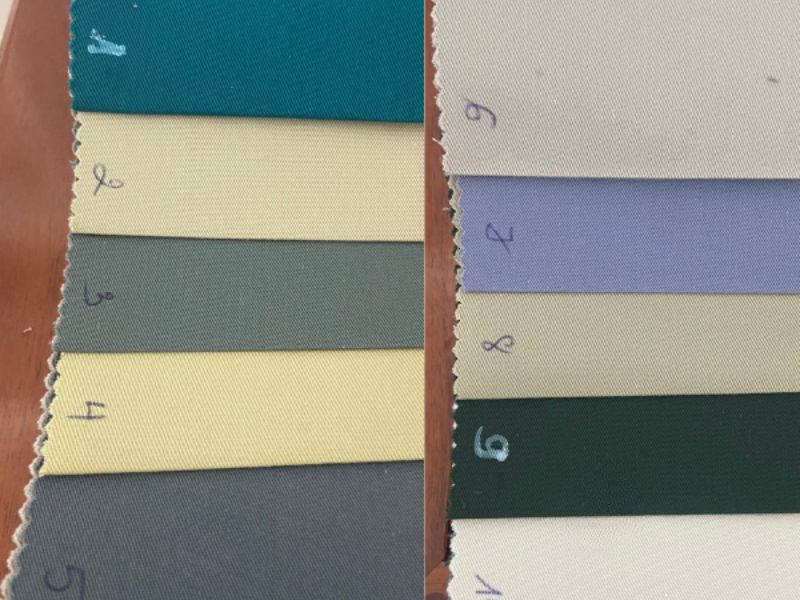
The protective uniforms for various industries are made using a 65/35 khaki fabric. This fabric is specifically chosen for its durability, comfort, and ability to withstand demanding work environments. It is crafted with a blend of 65% polyester and 35% cotton, offering the perfect balance of strength and breathability. The khaki color adds a professional and versatile touch to the uniforms, making them suitable for a range of industries including construction, manufacturing, agriculture, and more. Whether it’s protecting workers from potential hazards, ensuring visibility, or providing insulation, these uniforms are designed to meet the specific needs of different sectors, while maintaining a high level of functionality and reliability.
12. Stretch Khaki fabric
Kaki stretch fabric, also called khaki stretch fabric, is a blend of Cotton and Spandex in varying ratios. It is a synthetic material widely used in the fashion industry, particularly for creating uniforms, shirts, trousers, skirts, and suits for both men and women. This fabric offers a comfortable stretch, making it highly desirable for clothing items that require flexibility and ease of movement. Its popularity stems from its versatility and ability to provide both comfort and style in various garments.
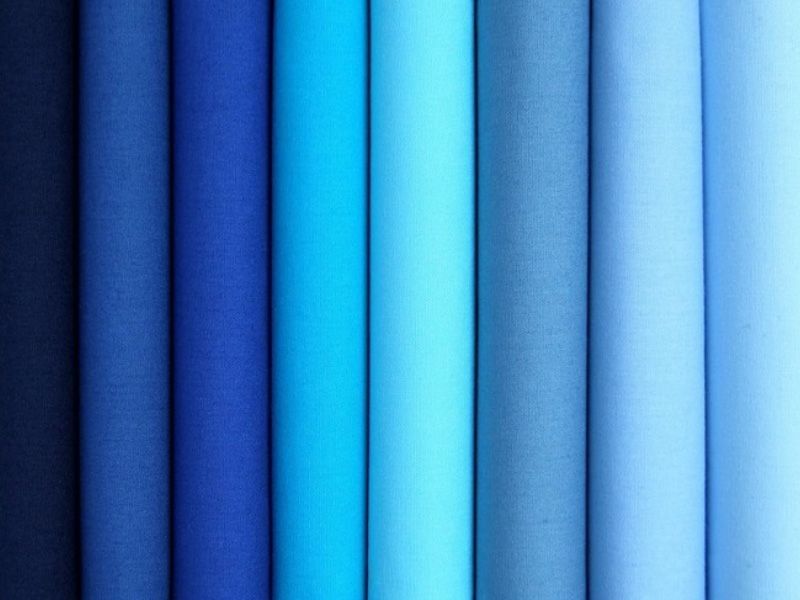
The stretch khaki fabric is highly favored and widely used for uniforms. This fabric is known for its flexibility, allowing for ease of movement and comfortable wear. It has gained popularity due to its attractive appearance and durability. The stretch khaki fabric is versatile, making it suitable for various uniform designs and styles. Its popularity can be attributed to its ability to maintain its shape and withstand frequent washing and frequent wear. Overall, the stretch khaki fabric is a top choice when it comes to uniform fabrics, meeting the needs of both comfort and functionality.
Cashmere and Terin are both types of fabric.
Cashmere fabric is crafted from the wool of Cashmere goats, whereas terin fabric is composed of a blend of polyester and cotton. Both of these textiles possess several desirable qualities such as softness, smoothness, lightweightness, warmth, excellent heat retention, efficient sweat absorption, minimal wrinkling, and exceptional durability. These attributes make them particularly well-suited for use in uniform fabrics.
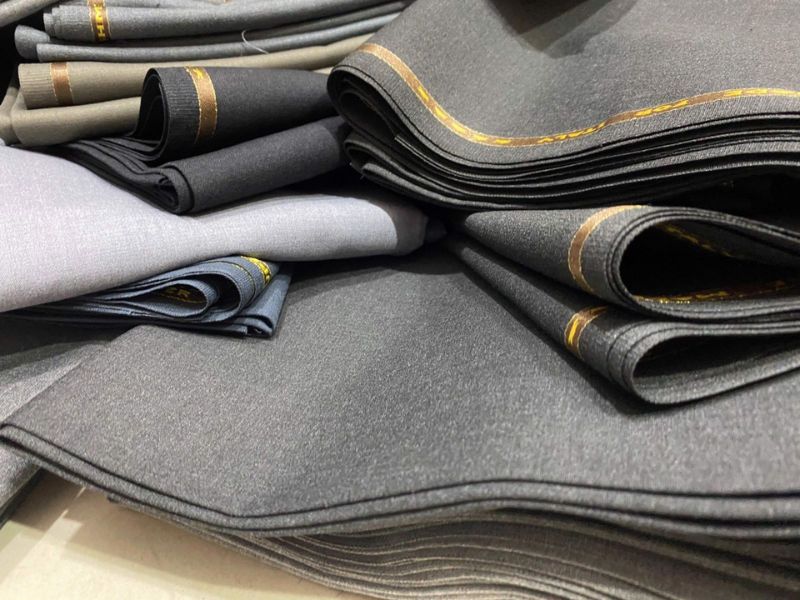
The fabric made from cashmere is known for its luxurious and high-end qualities.
Cashmere and Terin fabrics are highly favored when it comes to sewing office uniforms, especially men’s shirts, skirts, and trousers. These fabrics are renowned for their exceptional softness, as well as their ability to keep the wearer cool and wrinkle-free throughout the day. Not only are they popular in office settings, but they are also widely used for school uniforms, restaurant uniforms, and in the hospitality industry, including hotels and spas. The use of these fabrics helps to create a professional and polished appearance, adding an extra touch of elegance to the wearer’s overall look.
Micro fabric, also known as parachute fabric, is a lightweight and durable material often used for parachutes.
Micro parachute fabric, also referred to as thin parachute fabric, is a type of synthetic textile that is composed of a blend of Polyamide and Polyester fibers. The unique composition and structure of this fabric result in several remarkable benefits, making it an excellent choice for crafting uniforms, particularly those intended for outdoor pursuits, such as: hiking, camping, and other recreational activities.
- Windbreaker: Microfiber fabric is the most popular material for making windbreakers thanks to its good water and wind resistance and high durability. You can choose microfiber fabric to make windbreakers for school uniforms, company uniforms, and travel uniforms.
- Vest: Micro parachute vest is light, windproof, keeps the body warm and cool, suitable for outdoor activities or to wear on cold days.
- Wind pants: Micro wind pants are often used for sports uniforms, picnic uniforms,…
- Hats, caps: Micro parachute fabric is used to sew hats, sports hats, travel hats,… with high durability and good sun protection.
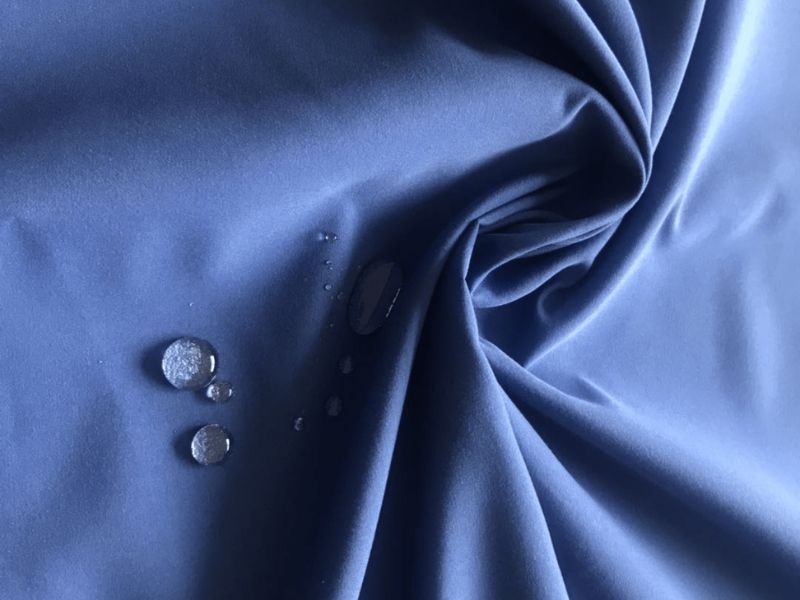
Parachute fabric is utilized in the manufacturing process of waterproof and windproof jacket uniforms. The fabric is carefully sewn to ensure the jackets provide protection against both water and wind elements. This process guarantees that the uniforms are durable and capable of withstanding various weather conditions.
The provided text above is a concise summary of 14 popular uniform fabrics that are currently in trend. It is hoped that the information provided about these fabrics will assist individuals in choosing suitable and stylish uniform designs that align with their business’s image and requirements. Additionally, it is recommended to stay updated with the latest fashion information by following the “News Fashion Bandung” section, which will provide relevant updates on current fashion trends.
To explore further, please refer to the following information:

